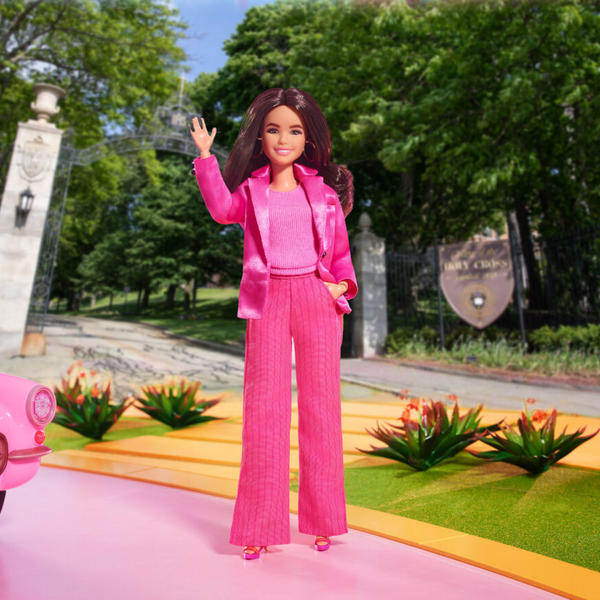As Gloria states and research shows, women tend to not negotiate salary when applying for jobs and they need to seem competent and confident, but not overly so as to make others feel uncomfortable or threatened, Bukatko said. In the movie, actress Margot Robbie’s stereotypical Barbie starts to question her desire to be liked and seen as nice and perfect; research shows that girls as young as 6-years-old have already developed the idea that niceness is associated with girls and brilliance is associated with boys, Bukatko said.
"It was heartening to me that the screenwriters obviously knew that research when they wrote the screenplay," Bukatko said. The movie makes overt to the public some discussions that have been happening in academic settings for years: "It takes it to the next place in a way that we social scientists are not so good at. Our students might take those discussions to the dorm rooms, but this movie breaks that discussion open to the general public," she said.
Barbie: Cultural Icon
Some of that research is considered in the sociology honors thesis of Hannah Tulinski ’17, "Barbie as Cultural Compass: Embodiment, Representation, and Resistance Surrounding the World’s Most Iconized Doll," in which she explores Barbie’s evolution as a cultural object and icon throughout the decades and how the doll changed in response to — or in conjunction with — the broader social discourse.
Throughout the years, Barbie has been refashioned and measured against the times, Tulinski wrote in her thesis. The doll, along with her friends and acquaintances, has been influenced by market and social pressures and cultural changes. Mattel has manipulated how children play with the dolls and create the dolls’ personalities and then relinquished control back to their limitless imaginations. Throughout it all, Barbie has survived and is now a permanent and versatile cultural icon, according to Tulinski’s research.
Her thesis is the most downloaded document in the history of Holy Cross’ CrossWorks, a digital archive of scholarship produced by the College community. It has been downloaded more than 26,000 times worldwide and in more than 172 countries. Consistently ranking in the repository’s Top 5 most downloaded documents monthly, the paper is on track to have its highest download spike yet, exceeding 1,100 downloads in July, according to Lisa Villa ’90, digital scholarship librarian.
"The movie painted a perfect picture of cultural objects, how they can be changed over time by social forces that create their meanings," Tulinski said in a recent interview. In the movie, witnessing Barbie’s reaction when she discovers that she didn’t have the positive cultural influence for women that she expected spoke to the "interplay of society and culture in the process of meaning making," said Tulinski, now a data product manager for Disney.
Corporate Influence
It also shows that corporations have the capacity to change and influence public thought in positive directions, Bukatko said: "Corporate decisions matter. The decision to move away from the highly stereotypical representations of girlhood has had benefits for girls."
Boys and men shouldn’t be overlooked, either, Bukatko said. As actor Ryan Gosling’s Ken seeks his own identity independent of Barbie, he encounters the "real world" as a young child would and absorbs the stereotypical gender roles immediately apparent to him: that men have power.
"To me it was important to show a naive person encountering the real world’s structure because that is actually how a young child encounters the world, looking for the cues that are readily perceivable," Bukatko said. "The movie shows us that we can change the message provided by those cues."


